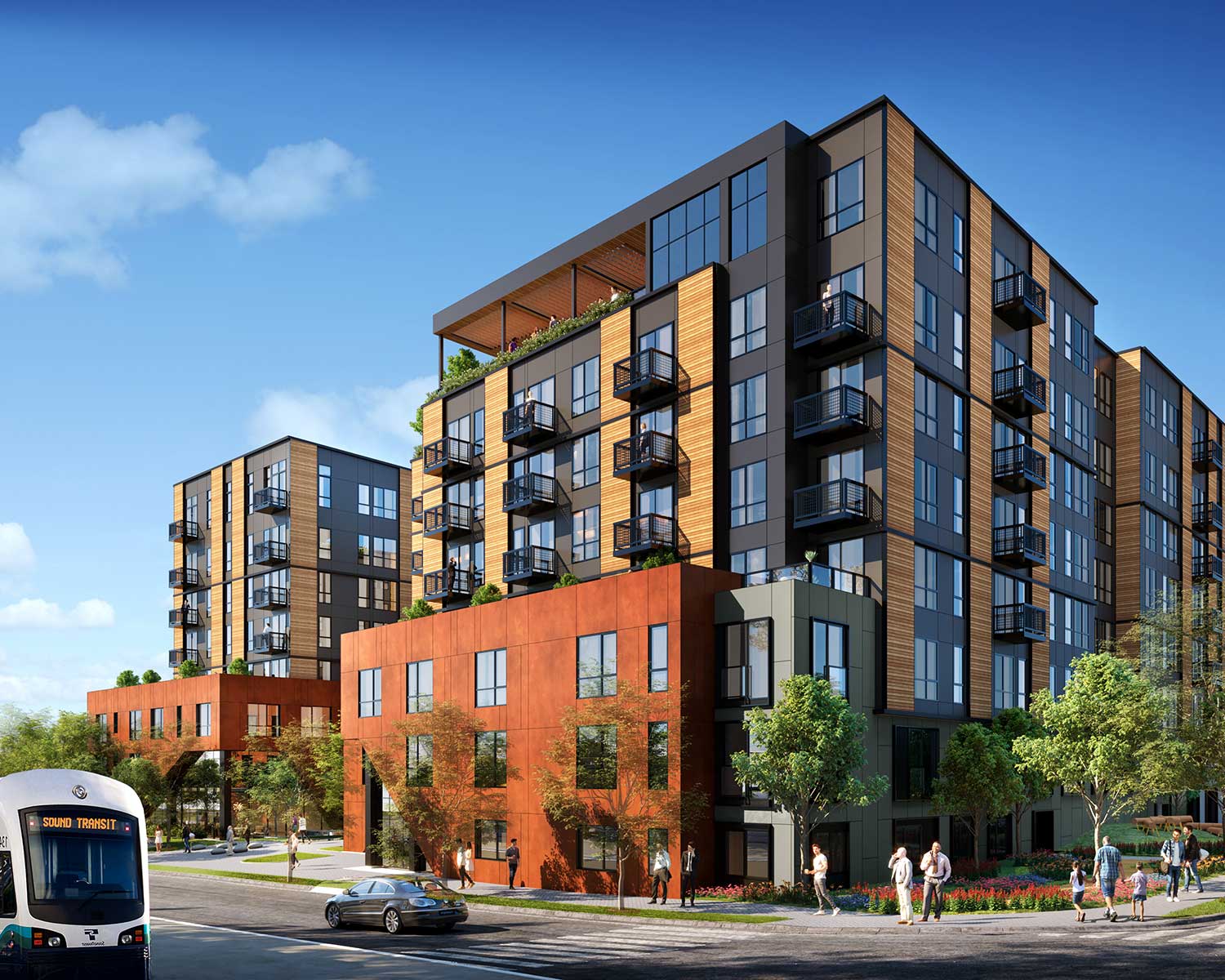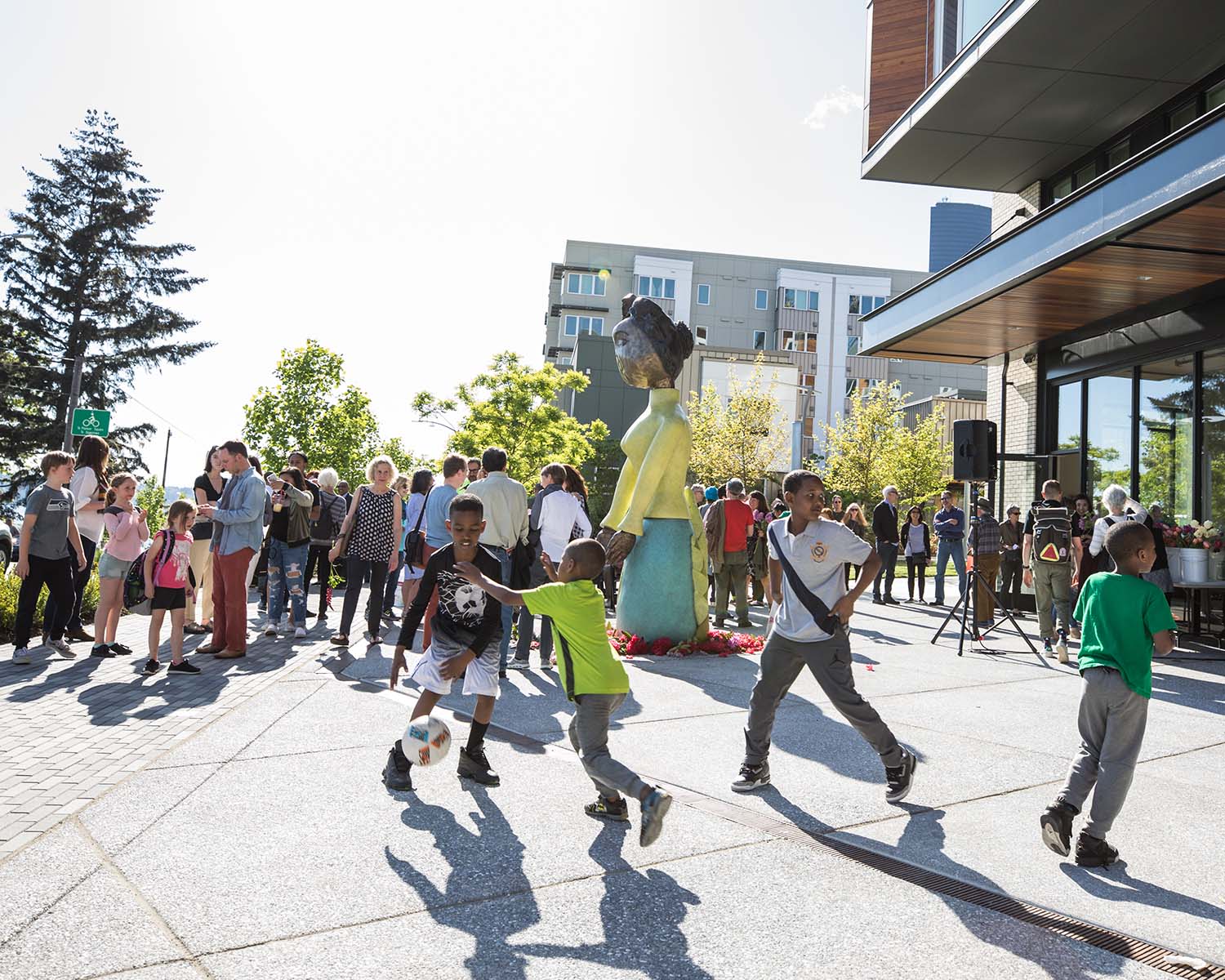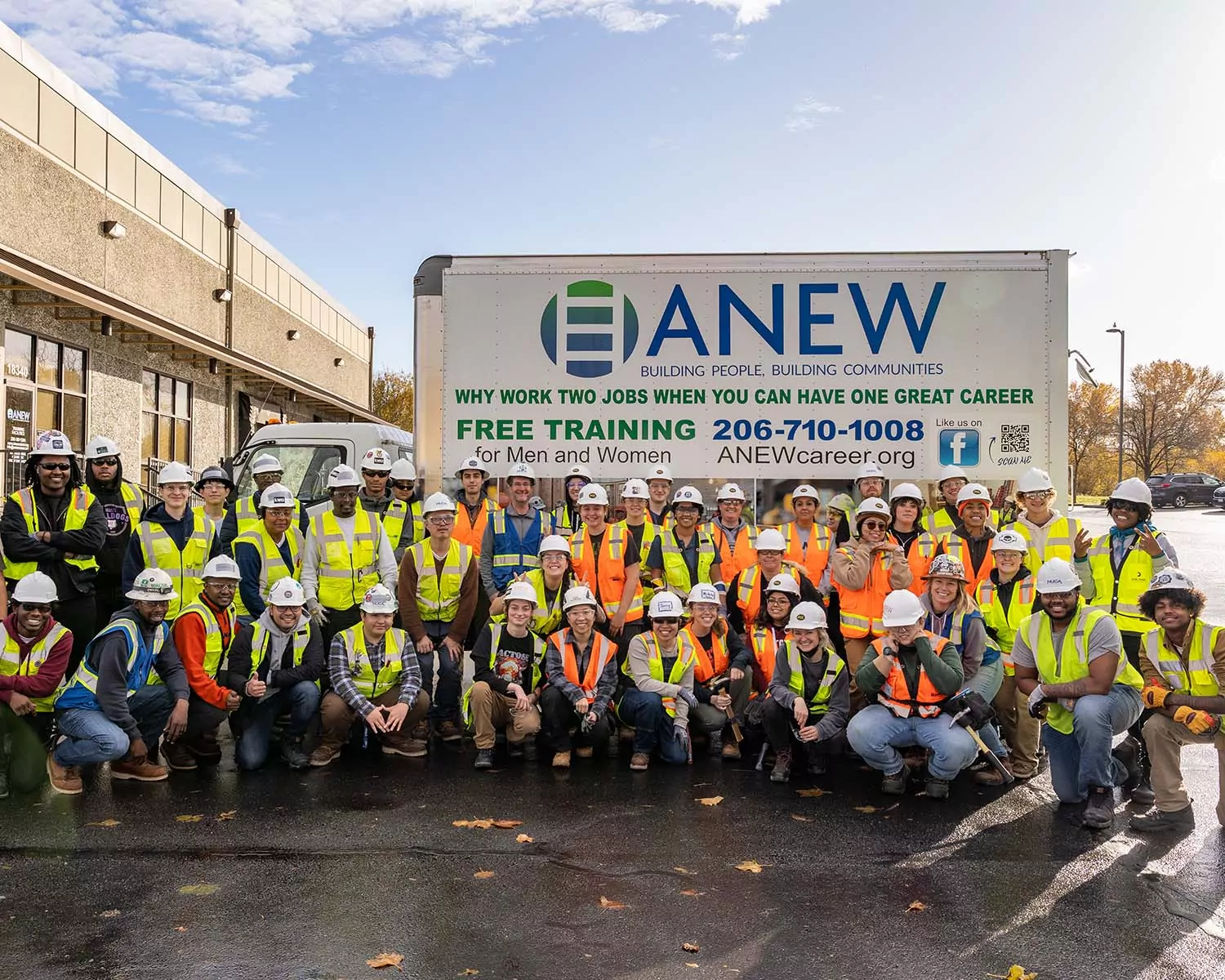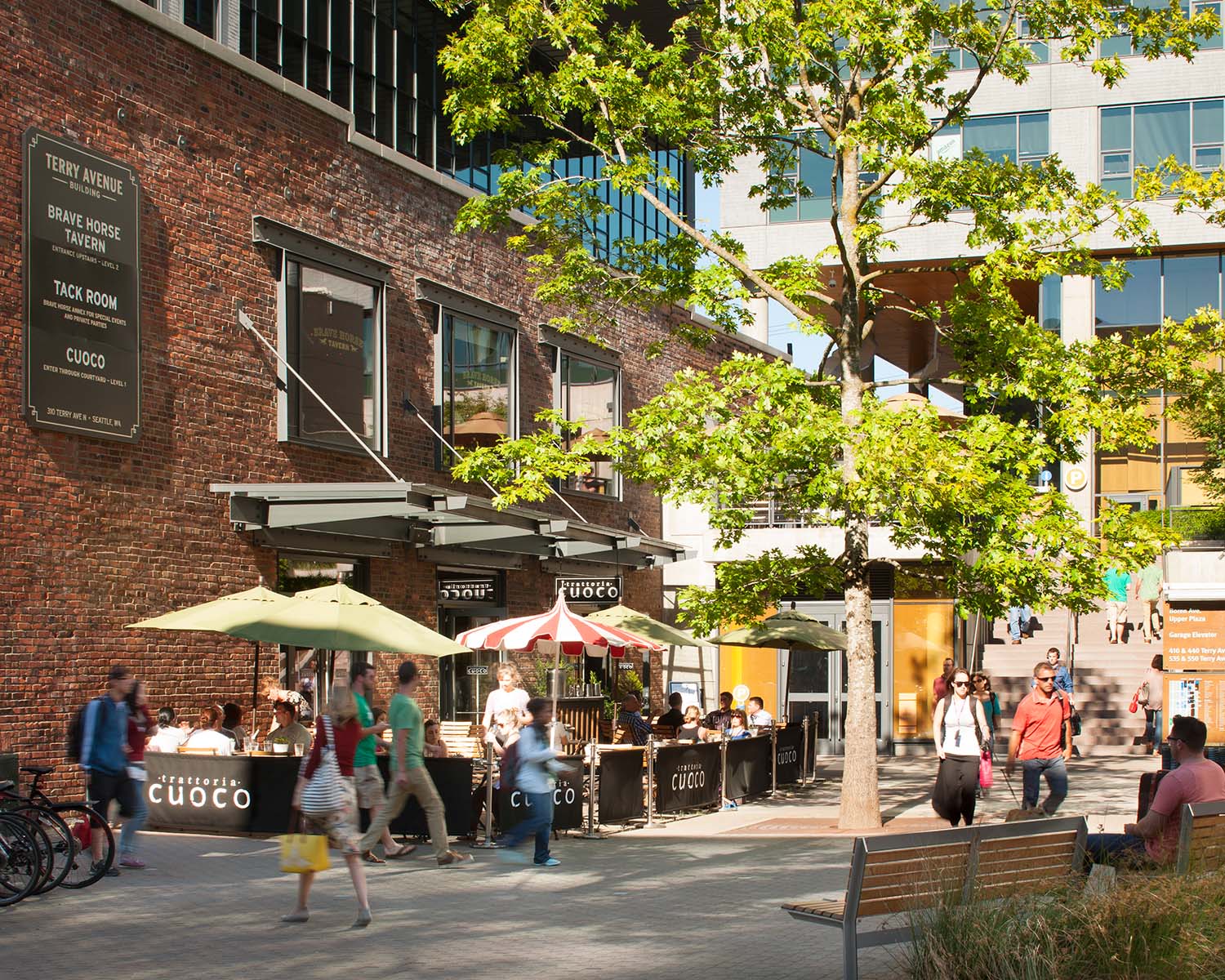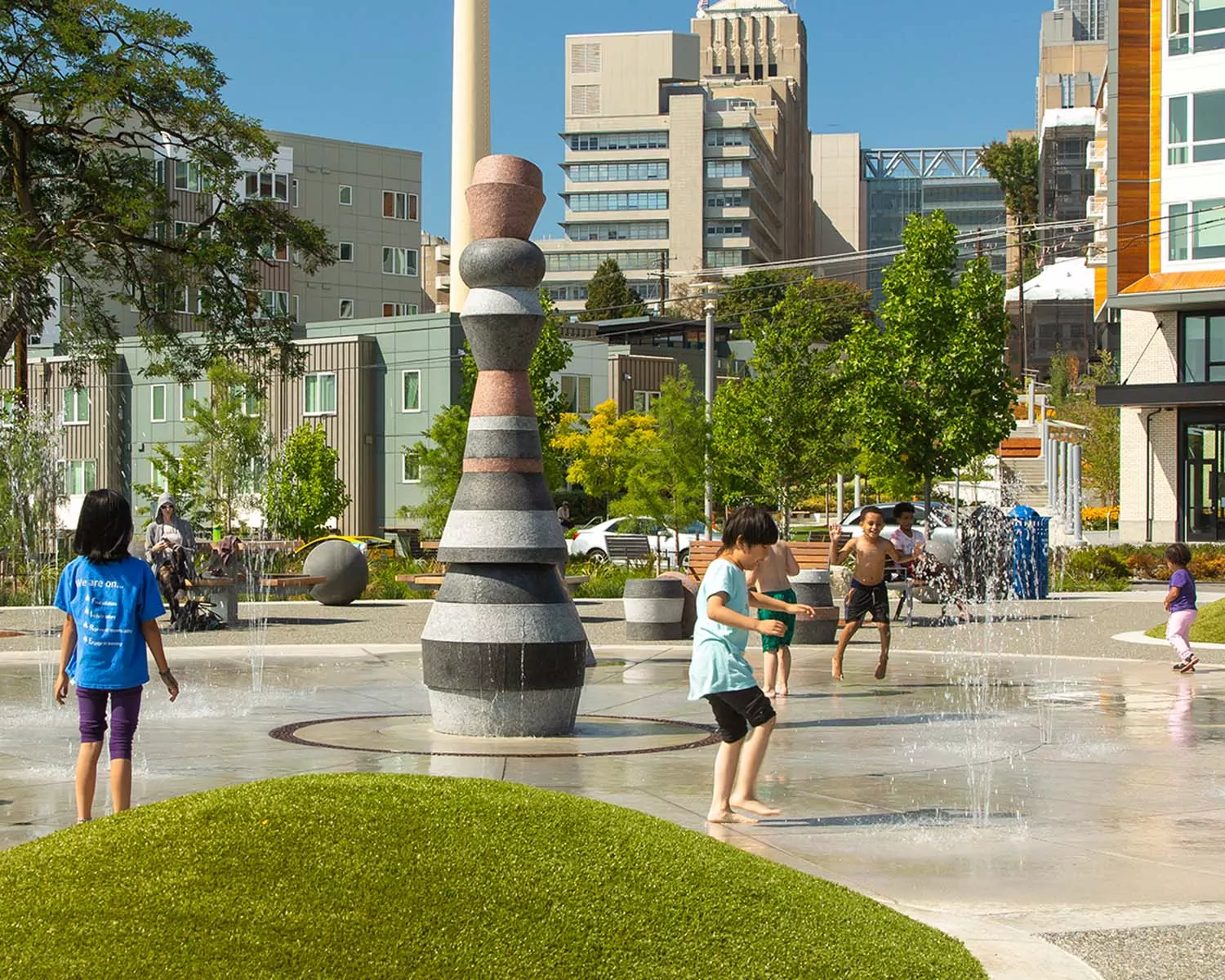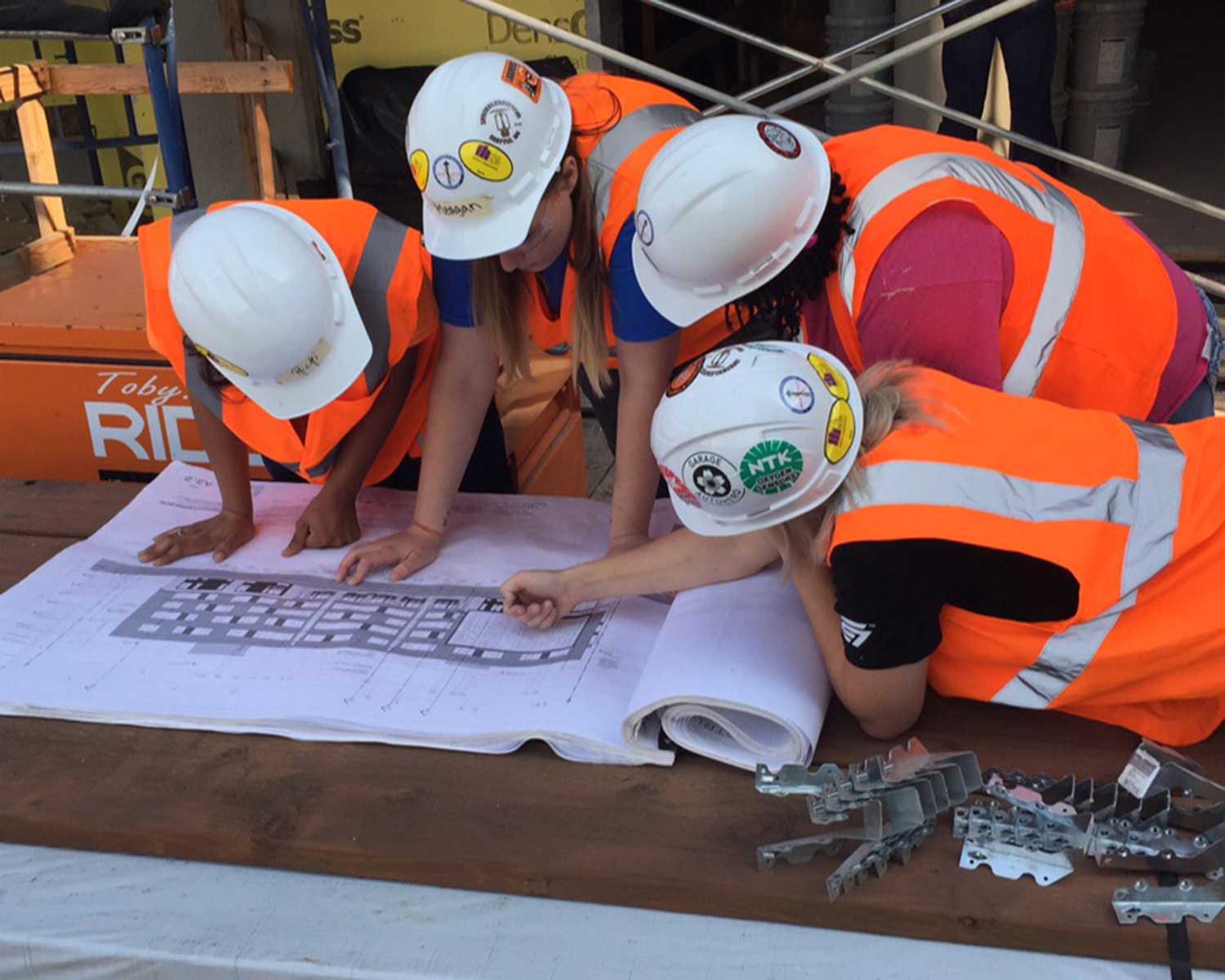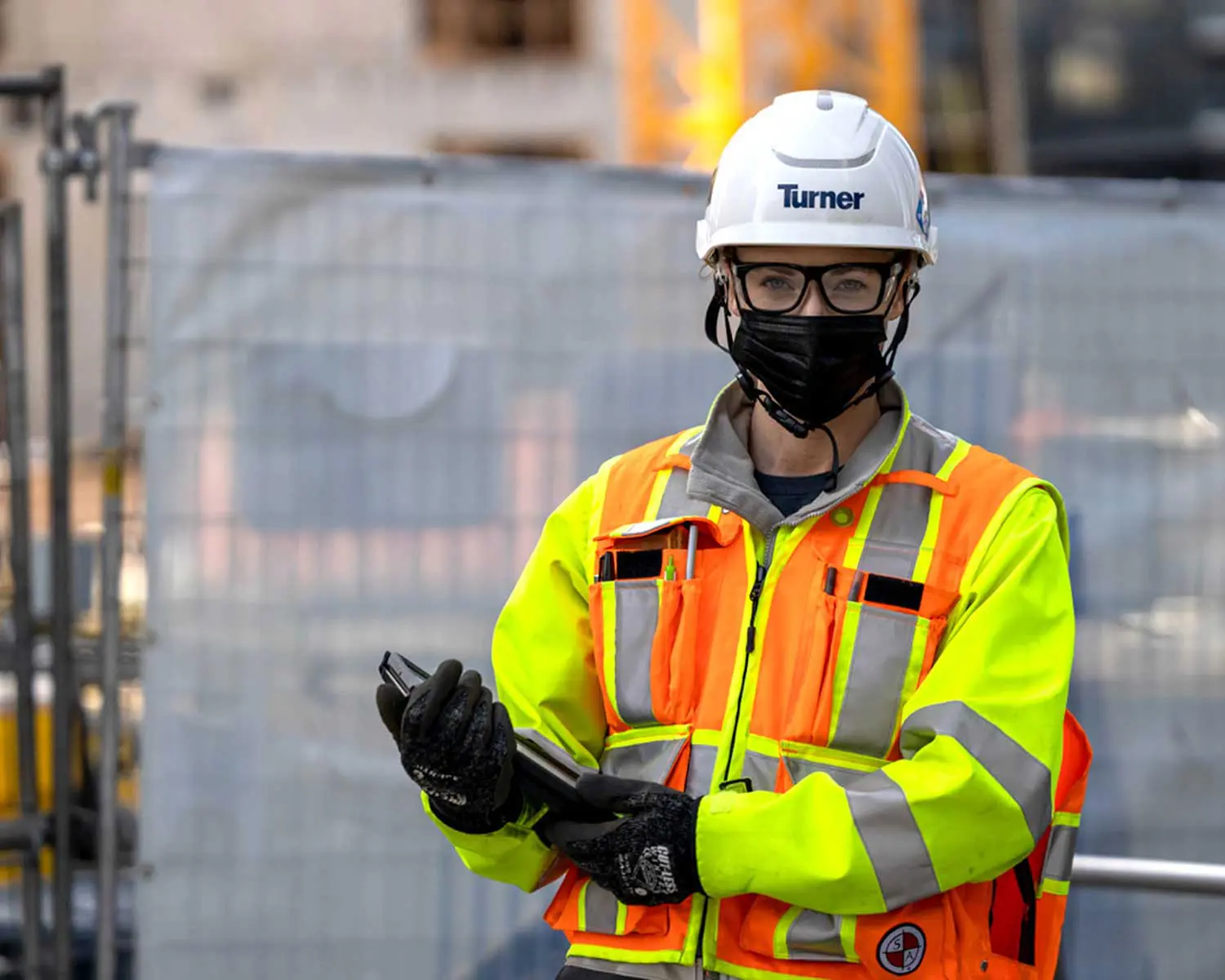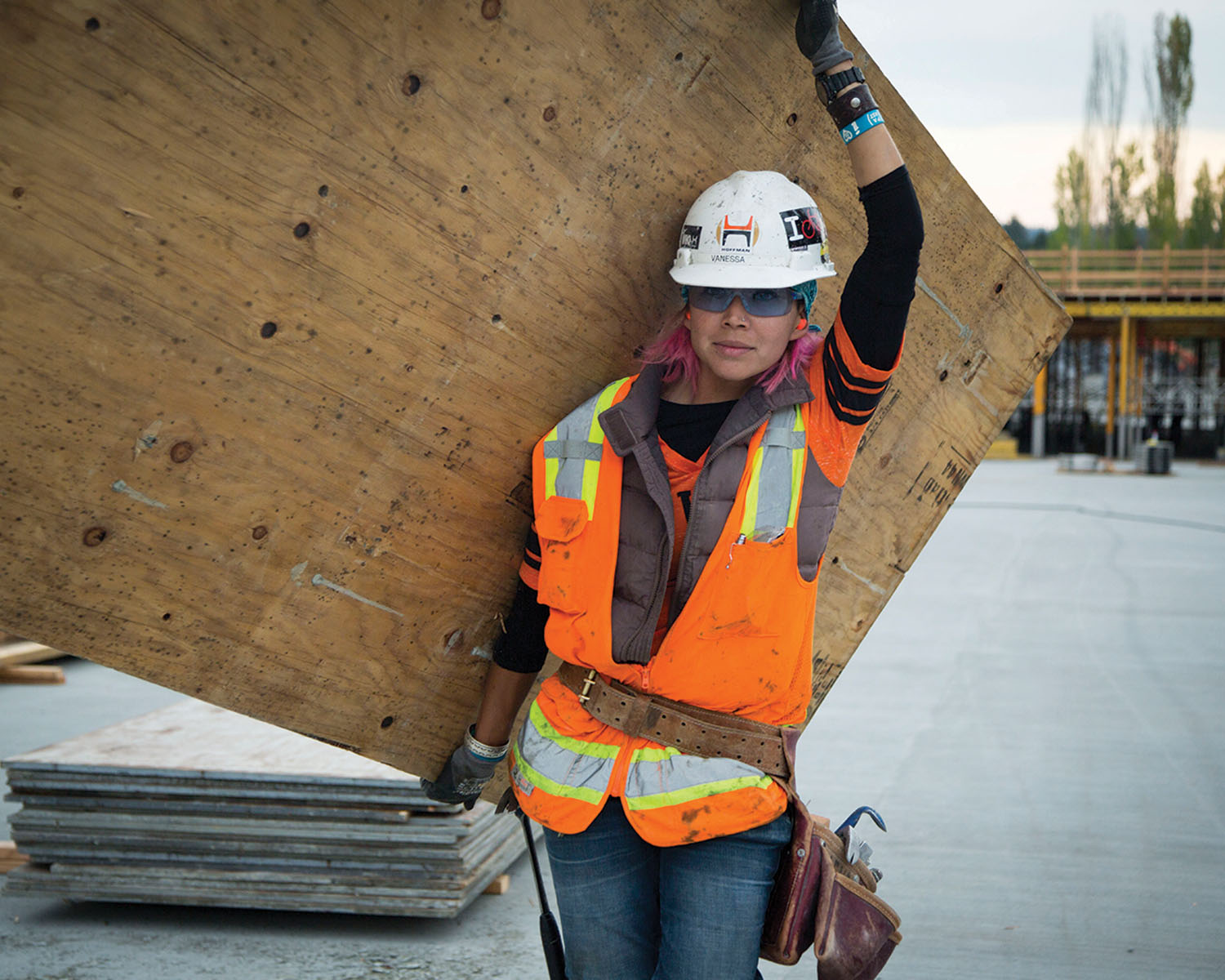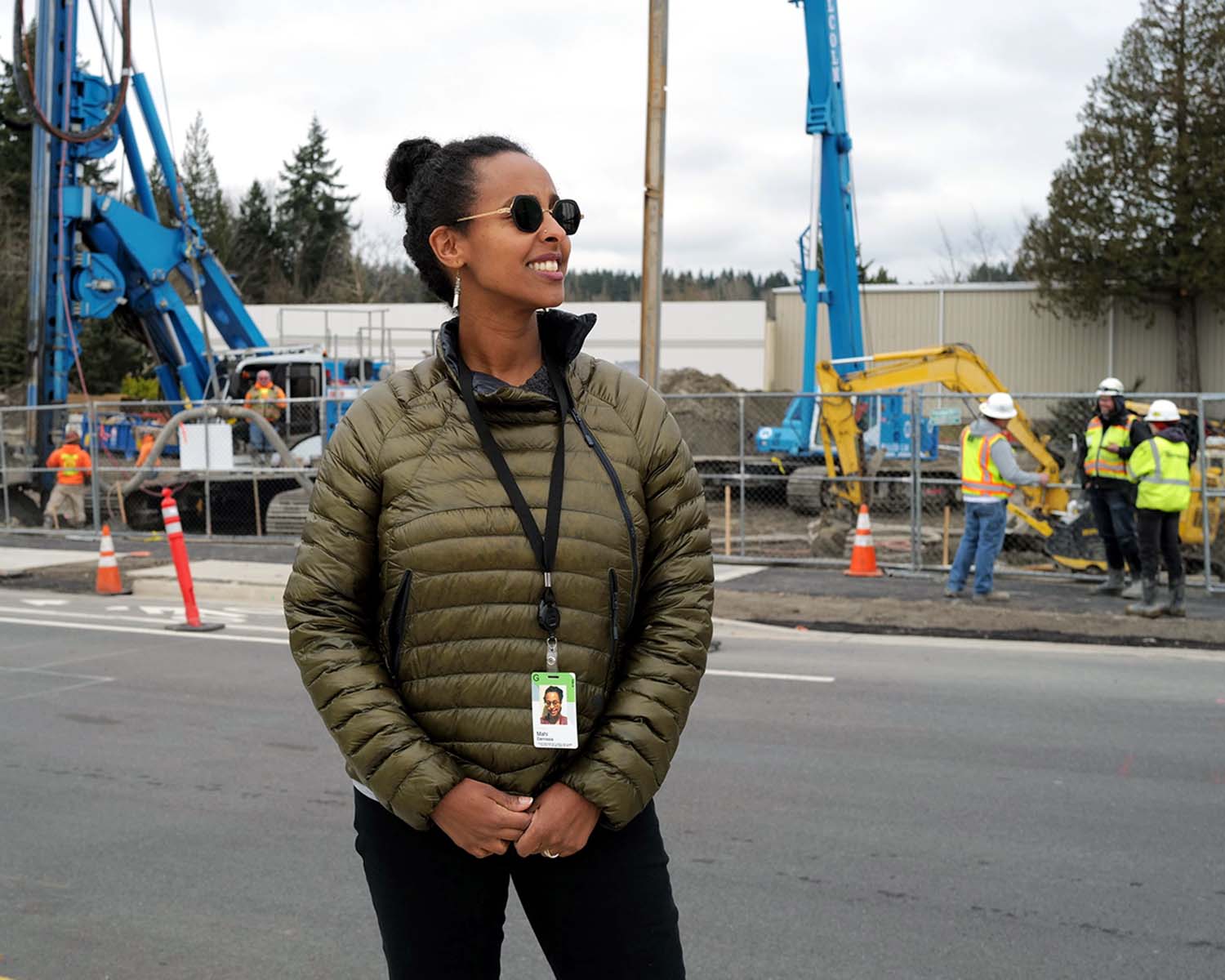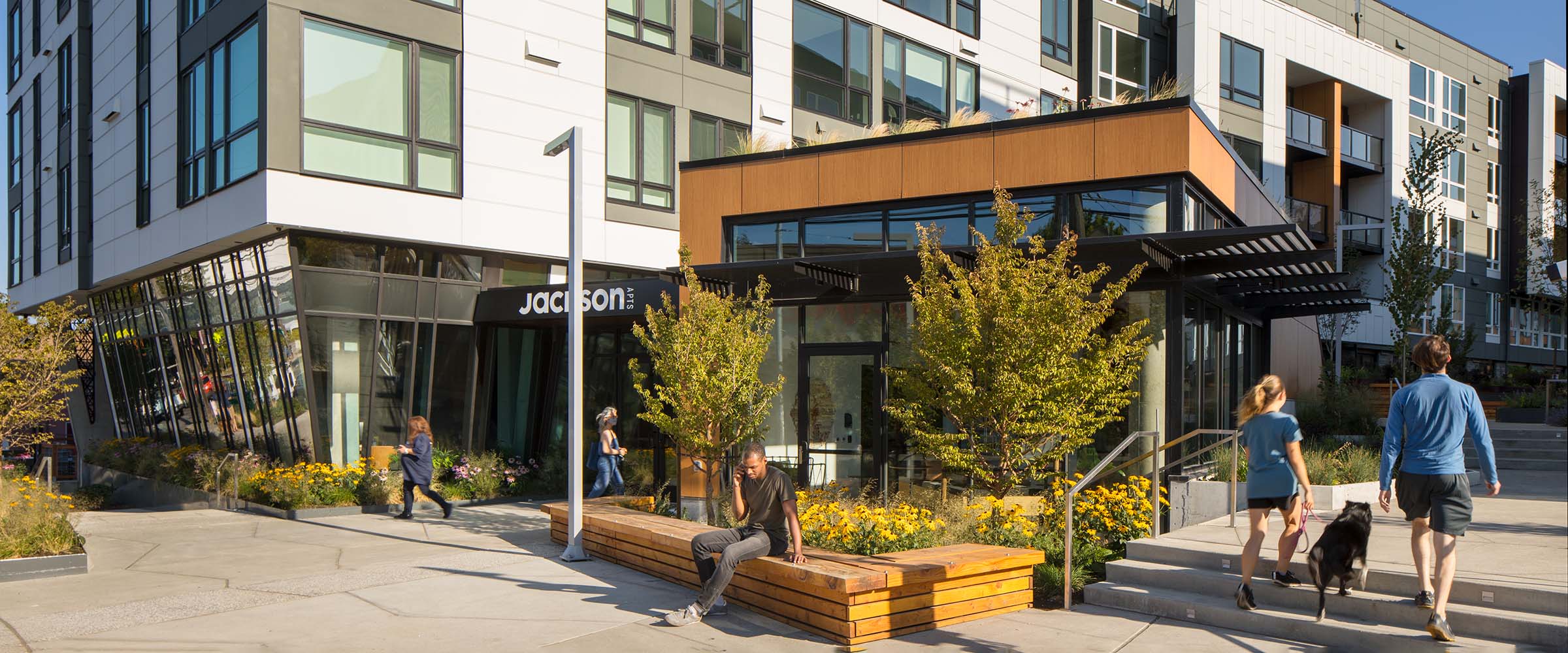
It started with a simple question – What does culture mean to you and your family? This is what Lawrence Pitre asked the children of the Central Area to think about when making the artwork that would adorn the Jackson Apartments construction site.
Pitre, a local artist and lifelong Central Area resident, had come up with the idea and reached out to Vulcan Real Estate (VRE) on a whim. “I said, ‘Here’s an opportunity for the community to get involved in the development – would you be interested?’” VRE wholeheartedly said, “Yes!” The art project was an overwhelming success; inviting the community’s youngest, most vibrant voices to co-create in an aspect of the development. It was the kind of inclusivity VRE desired to explore throughout the entire development process of the Jackson Apartments, its first project in the Central Area of Seattle.
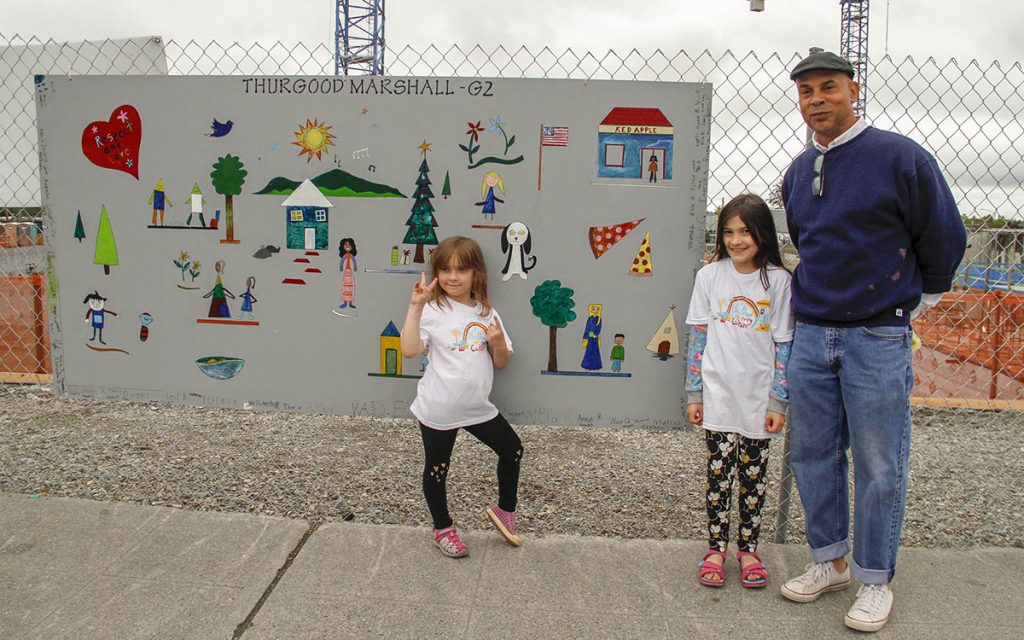
Open Heart, Open Mind
Before even conceiving of the idea of Jackson Apartments, a question lingered for VRE – Can we create new development in the Central Area and still honor the legacy that came before it? The Central Area is known for its rich history and deep ties to Black culture, with unique community concerns around displacement and cost of living. Is it possible to develop in an inclusive way that would be acceptable to the community?
“The community is the greatest gift we’ve got”
-Lawrence Pitre
There is no easy answer. Throughout the process, VRE committed to asking questions and gathering insight about the wishes, desires, hopes, and fears of the community. VRE turned to a critical skill that informed each and every aspect of the Jackson Apartments’ design: listening.
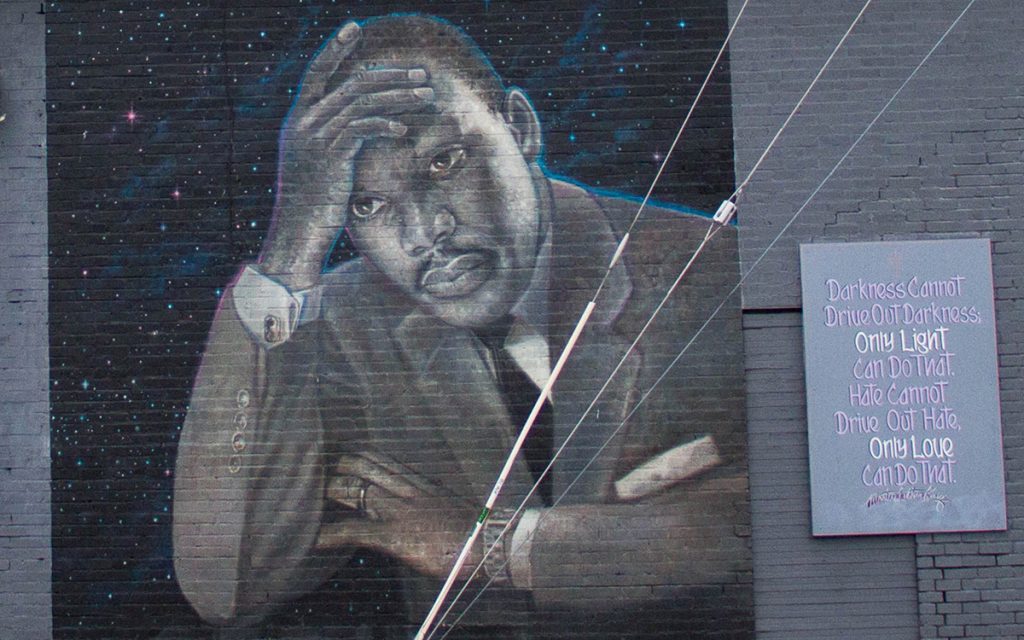
Capturing Local Voices and Wishes
“In Seattle, every time you look up, you see something different,” says Central Area and Jackson Apartment resident, Ray Bradley. “Before the apartments were built, I tried to envision what the change would look like and what would Vulcan do for the neighborhood. Usually people just come in and start building.”
VRE was aware that the project could spark concern, so it decided to tackle the issue head on. Before it acquired the site, VRE approached Central Area neighborhood leaders and non-profits. “We wanted to hear their thoughts,” says Pearl Leung, former Director, External Affairs at Vulcan. “We were very upfront about our idea to purchase the site. We asked, ‘How would you like us to work with the community?’ ‘What is the best way forward?’”
After the meeting, VRE created early design concepts incorporating its learnings. It then hosted a large community open house to let the neighborhood know about its plans before making the purchase public. “It was an open ear to the community, where people were welcome to be curious, ask questions and provide their thoughts. I’ve never seen that before,” says Ray Bradley.
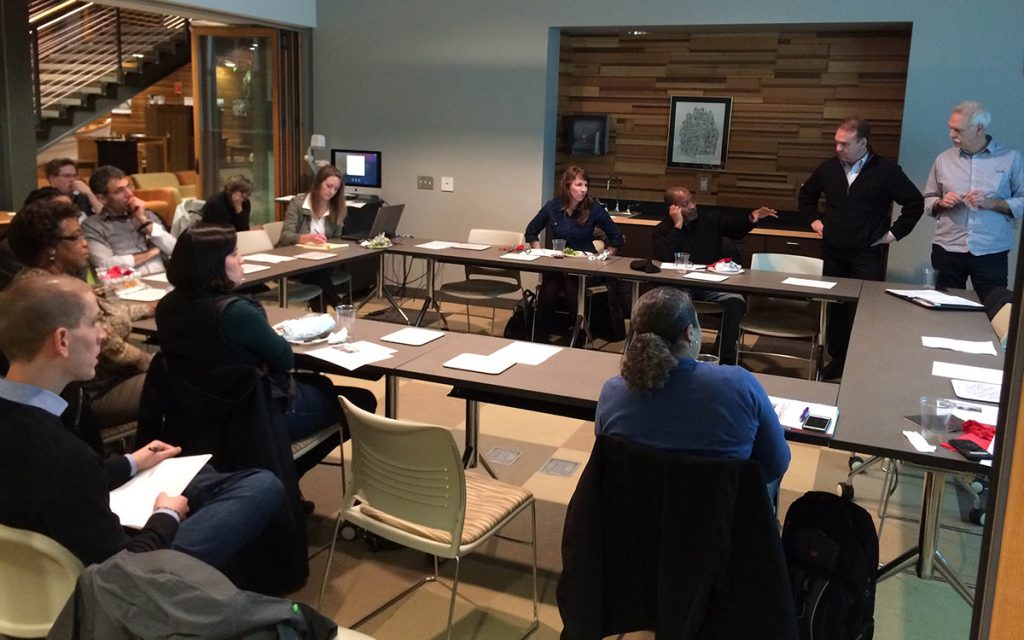
In total, Vulcan hosted over 200 community meetings, many of which involved mining residents’ ideas about the design of the neighborhood and how to honor community history and culture. “It gave residents the opportunity to speak their voice. People had the chance to say, ‘You know what, we like this, but we don’t like that,’” Lawrence Pitre remembers. “I think when the community has that chance, they begin to feel comfortable about change.”
Creating Opportunity for All
With the neighborhood planning process complete, VRE set out to incorporate learnings from the community, as well as key components of inclusive development.
One of the most important priorities included creating opportunities for minorities and people of color to prosper in their own backyard. VRE tackled this by voluntarily awarding 34 percent of subcontractor contracts to Women- and Minority-Owned Business Enterprises (WMBEs). VRE made it possible for WMBEs to be competitive in bids by dividing larger bid packages into multiple smaller scopes of work and relaxing insurance requirements for subcontractors. VRE also awarded 19 percent apprenticeship hours. Both percentages exceeded the original goals.
In addition, VRE worked to help local businesses secure retail spots that may have otherwise been unaffordable. It did this by creating micro-retail options of about 500 square feet, putting space within reach of small entrepreneurs.
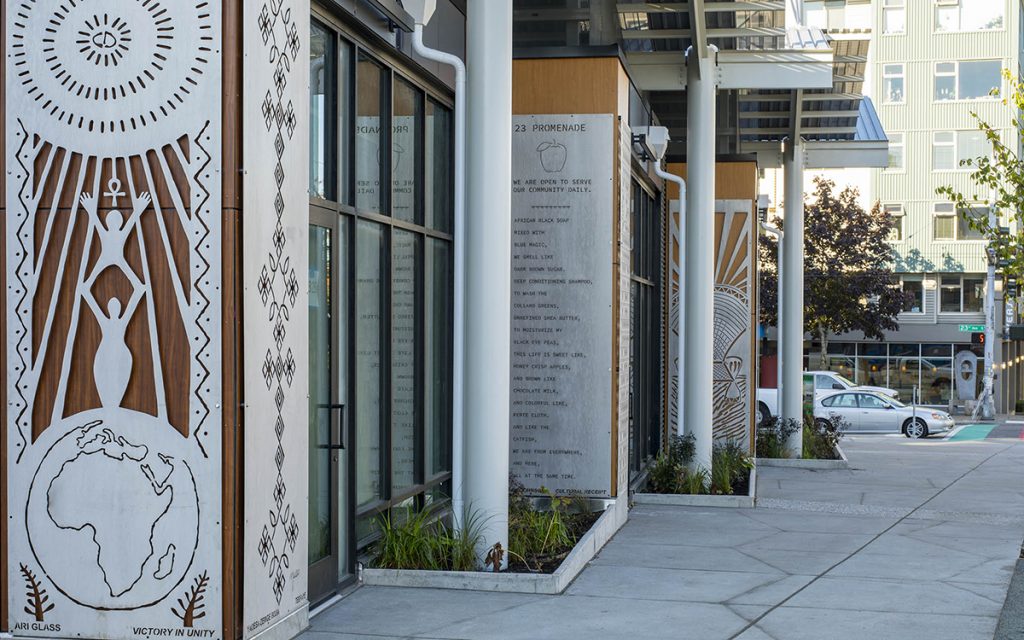
These retail spaces are located at the highly visible intersection of 23rd & Jackson and designed to be move-in ready, requiring little upfront capital from tenants. In order to find tenants with the greatest chance at success, VRE partnered with Ventures, a local non-profit that provides access to business training, capital, coaching, and hands-on learning opportunities for entrepreneurs that focuses on women, people of color, immigrants, and individuals with low income.
One of the first retail tenants at Jackson Apartments is QueenCare, a Black female-owned business focusing on luxury, quality body-care products made with natural ingredients, as well as home items, wearables, and unique gifts. CEO Monika Mathews has been living in the Central Area for 28 years and cannot imagine a better flagship location for her business.
“This is so much bigger than a building. This is about, culture, families, and so many stories of triumph and stories of pain too.”
-Monika Mathews
“It represents my story full circle, because when I moved to the Central Area, I was to the point that people probably thought I was going to be a statistic. But I was able to learn and grow, and acquire the skills of entrepreneurship, many of which I learned through Ventures,” says Mathews. What’s more, Mathews has channeled her experience into QueenCare’s social good component, providing internships to young Black females, so that they can gain marketable skills to be competitive in the workplace.
“This is so much bigger than a building. This is about, culture, families, and so many stories of triumph and stories of pain too,” says Mathews. “I think Vulcan did the right thing by listening to the community. We need spaces to be reflective of Black culture, that’s the heart of the Central Area right there on 23rd and Jackson.”
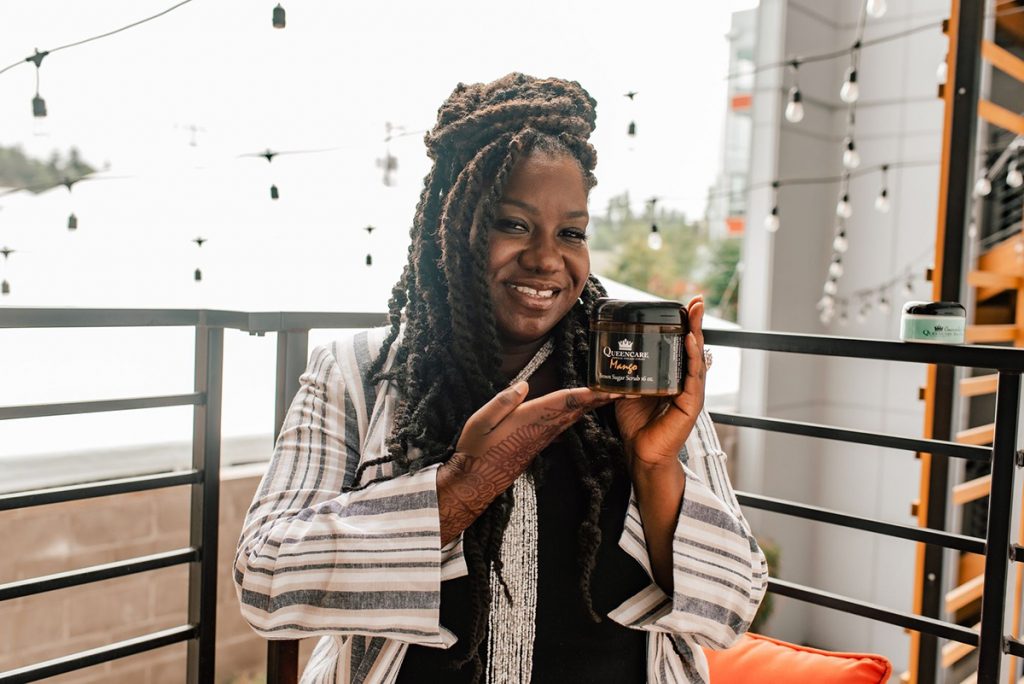
Rent Within Reach
In addition to equitable retail opportunities, it was a high priority of both the community and VRE to include workforce housing that is affordable to people from within the neighborhood. Jackson Apartments offers a mix of housing including income-restricted units.
To date, residents at Jackson Apartments include people earning minimum wage, such as fast food restaurant workers, as well as hospital workers, teachers, a firefighter, security guards, and administrative assistants. More than a dozen residents relocated from within the Central Area.
“It’s a little surprising because usually people are priced out of new developments,” says Ray Bradley. “I don’t know anybody’s specific situation but the diversity is here. My next-door neighbor is someone I grew up with. I never would have thought I would see anybody I know, let alone someone I’ve known for 25 years.”
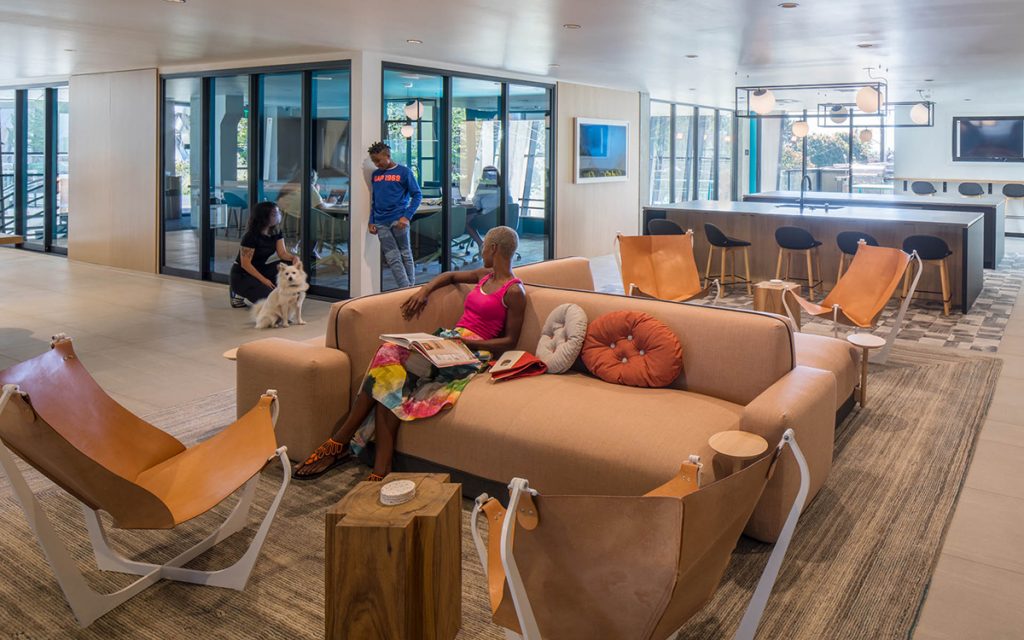
New Construction Meets Cultural Preservation
While change can be challenging, when at its best and most intentional, it can bring a fresh perspective to a neighborhood. When Jackson Apartment resident Laura Armes wakes up in the morning, she is excited about what she sees. She cites the brand-new building, the 24-hour security, and the smart appliances in her unit that save her money. For 17 years, Laura lived just a block from her new unit, so to her it feels like home, even if things have changed.
Ray Bradley agrees. A third-generation resident of the Central Area, Ray grew up playing in the streets around the Jackson Apartments, and now finds himself living in one. He’s a fan of the new architecture and the shared amenity spaces that allow him to have different experiences at home. He also enjoys the nods to the past in the artwork throughout the building.
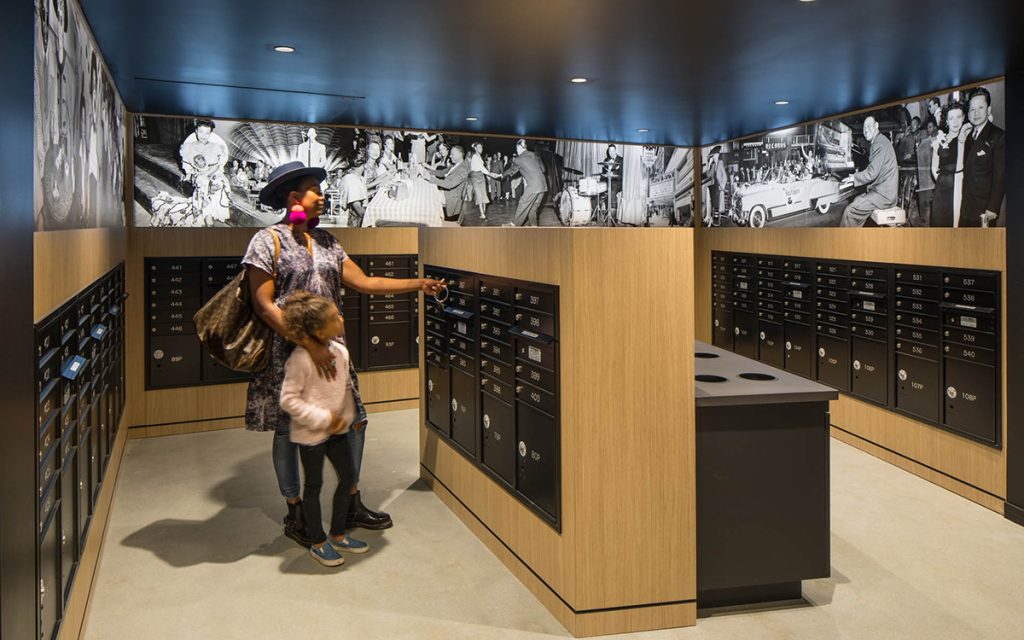
“My mother, who is a lifelong Central Area resident, noticed the historic photos in the mailroom of the building,” he says. “She started telling me stories about the neighborhood through the pictures, things I didn’t even know. It was like a walk down memory lane, a time capsule for her.”
This combination of considered preservation and inclusive, forward-thinking design is something VRE hopes will contribute to meaningful change in the neighborhood. The kind that all people can participate in and enjoy.
“It felt important. Like everything was worth it.”
-Lawrence Pitre
Artist Lawrence Pitre recalls the day he hung the artwork the neighborhood children made for the outside of the Jackson Apartments. “The children drew flags of their countries of origin, the food they eat, their families. They talked about people they knew who lived in the Central Area at one time or another. They signed their pieces and took pictures by them at the site.” Pitre was touched by the heart and thought that went into each and every piece. After everything was hung, he remembers taking it all in: “It felt important. Like everything was worth it.”


